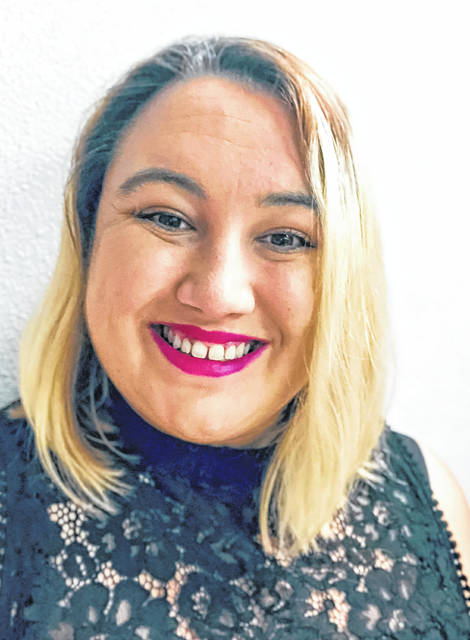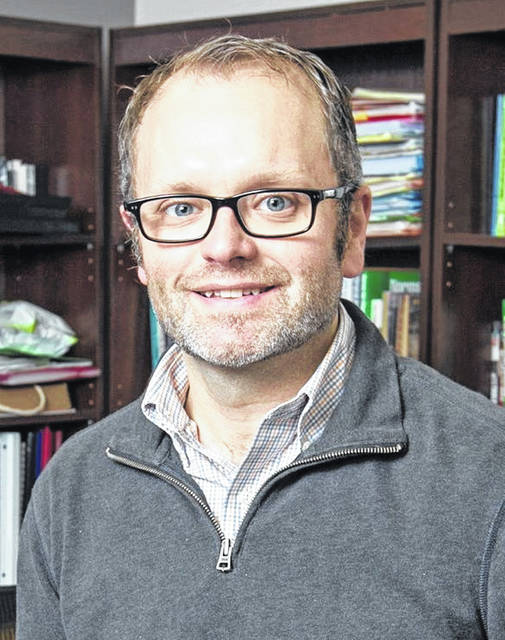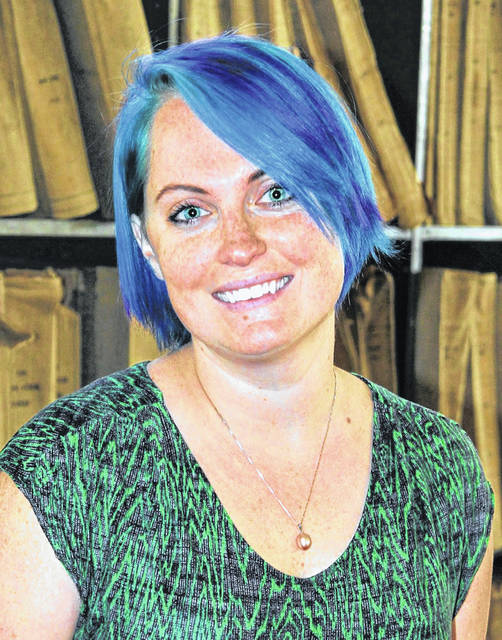


Three Ohio Wesleyan University professors looked at how the COVID-19 pandemic has impacted the food supply chain during a round-robin panel discussion held Monday.
To start the “Food Systems and Food Security in the Pandemic” talk, they showed a humorous meme of the “two types of people during quarantine.” One woman said she was taking this time to better herself, while the other said she just ate carrot cake with her hands.
Ohio Wesleyan nutrition professor Liz Nix said the food supply system — or going “from farm to fork” — consists of production, processing, distribution, consumers and food waste management. There are outside influences that impact the supply chain, such as culture, economics, environment and policies. Nix defined food system resilience as the capacity over time of a food system and its units at multiple levels to provide sufficient, appropriate, and accessible food to all in the face of various and even unforeseen disturbances.
“If there’s one thing I think we can all agree on, is that COVID-19 is an unforeseen occurrence,” Nix said.
She said the peak of farming in the United States was 1935, and the number of farms has gone down dramatically from 6.8 million to about 2 million. However, the average size of the farm has increased from 155 acres to 440 acres. While 90% are still family small-scale farms, they take up 48% of farmland and make 20% of farm revenue. The farmer’s major crops in the U.S. are corn and soybeans, and chief livestock production involves beef, poultry and dairy.
“It has a negative connotation, but nearly all of our food is processed in one way or another,” she said. For example, canned food and staples are beneficial when stockpiled. “It has allowed us to stop being hunter-gatherers and led to civilization and the leisure class as we know it.”
Nix said that for every dollar we spend on food, 85% goes to manufacturing it. Her students found the small-scale farmer’s income is about the same as the entry-level factory/line worker in a food company processor or a line worker/cashier at a grocer/retailer or fast food restaurant. The students thought CEOs of these companies would make five to twenty times more than the essential workers, but found they made an average of 550 times more.
Geography professor Ashley Allen said COVID-19 is contributing to food loss in the U.S., because some farmers are unable to store or distribute perishable items intended for restaurants, hotels and schools. She pointed out the difference between food loss (the decrease in quantity and quality at the production stage) and food waste (removal of food that was fit for human consumption).
“Before the pandemic, food waste was already a big issue,” Allen said. “Anywhere from a third to half of all food produced is lost or wasted. What happens when we’re wasting that much food is we’re wasting money, too. About a trillion dollars of all the food produced is never eaten, and this happens on all levels of the food chain. Every American wastes 220 pounds of food per year. To put that in perspective, I am an LSU Tigers fan — that is a Joe Burrow of food.”
The latter reference was in regards to the weight of the Ohio-raised Heisman Trophy-winning quarterback.
Allen also talked about produce in the grocery store.
“We see thousands of oranges, more than we can all possibly eat, because things need to look plentiful and perfect,” she said. “So we buy seven oranges and eat one the first day, and the rest sit around forever. That’s not a judgment, that’s just what happens.”
She went on to say that if you were to turn food waste into a country it would be the third-highest emitter of greenhouse gases, after China and the U.S. In addition, the land devoted to producing wasted food would be the second-largest country in the world by area, roughly 5.4 million square miles (the continental U.S., Central America and part of Canada).
“In terms of waste, we’re not great because we have this culture of over-buying, where your eyes being bigger than your stomach. There’s always room to do better.”
Health professor Christopher Fink said the reason we had empty grocery store shelves when the pandemic first struck the nation was people stocked up and stopped going to restaurants. He said that for every dollar we spend on food, 12% percent was at grocery stores, and 54% was from dining out.
“When the COVID-19 crisis hits, we see an impact to that,” Fink said. “When restaurants and food service takes the hit, it puts more pressure on grocery retail industry before it gets to consumers. Kroger saw a 30% increase in sales in March.”
On the other hand, he noticed that some grocers are now selling products that previously was sold to the hospitality and restaurant industry.
Fink also discussed food security, which has caused many people this year to visit local food pantries or food banks.
“Food security exists when all people, at all times, have physical and economic access to sufficient safe and nutritious food that meets their dietary needs and food preferences for an active and healthy life,” he said, adding the USDA has designated levels of food security as high, marginal, low and very low. Food security is based on availability, access, utilization and stability. It can be chronic, transitory and seasonal.
He said as a result of COVID-19, he expected there to be fewer restaurants and food-centered small businesses, more cooking from home and experimenting with recipes, new foods, and new practices such as canning and bread-making.
All three professors discussed what Americans can do about food during the pandemic. Advice included composting, only buying what is needed, and relying on senses instead of expiration dates (with the exception of baby formula). Other ideas were to cook from the pantry first, love leftovers, know where food comes from, donate and volunteer. While they promoted healthy eating, they also said to support restaurants. They said this wasn’t a time to deal with diet, just all the stressors in your life. Finally, they quoted food writer Michael Pollan, who says to vote with your fork.
Before the course, George Floyd, the man who died in Minneapolis on Memorial Day while in police custody, was honored with silence for 8 minutes and 46 seconds long, the length of time Floyd had an officer’s knee pressed on his neck. Viewers were asked to access a link — https://bit.ly/2MkhLIV — that provides resources “to reflect, make plans, or take action to promote unity and love in your community, state, country and the world.”
Monday’s hour-plus virtual class began week six of a 10-week, free online course called “We’re in This Together: An Interdisciplinary Exploration of the Coronavirus Pandemic.” Taught by 24 Ohio Wesleyan faculty members, the course is open to students and the public alike.
OWU spokespersons said more 1,200 people are participating in the class, and more than 350 people are taking part in a Facebook COVID-19 Class Discussion Group.
For more information about OWU’s “We’re in This Together” course, visit www.owu.edu/COVIDclass.




